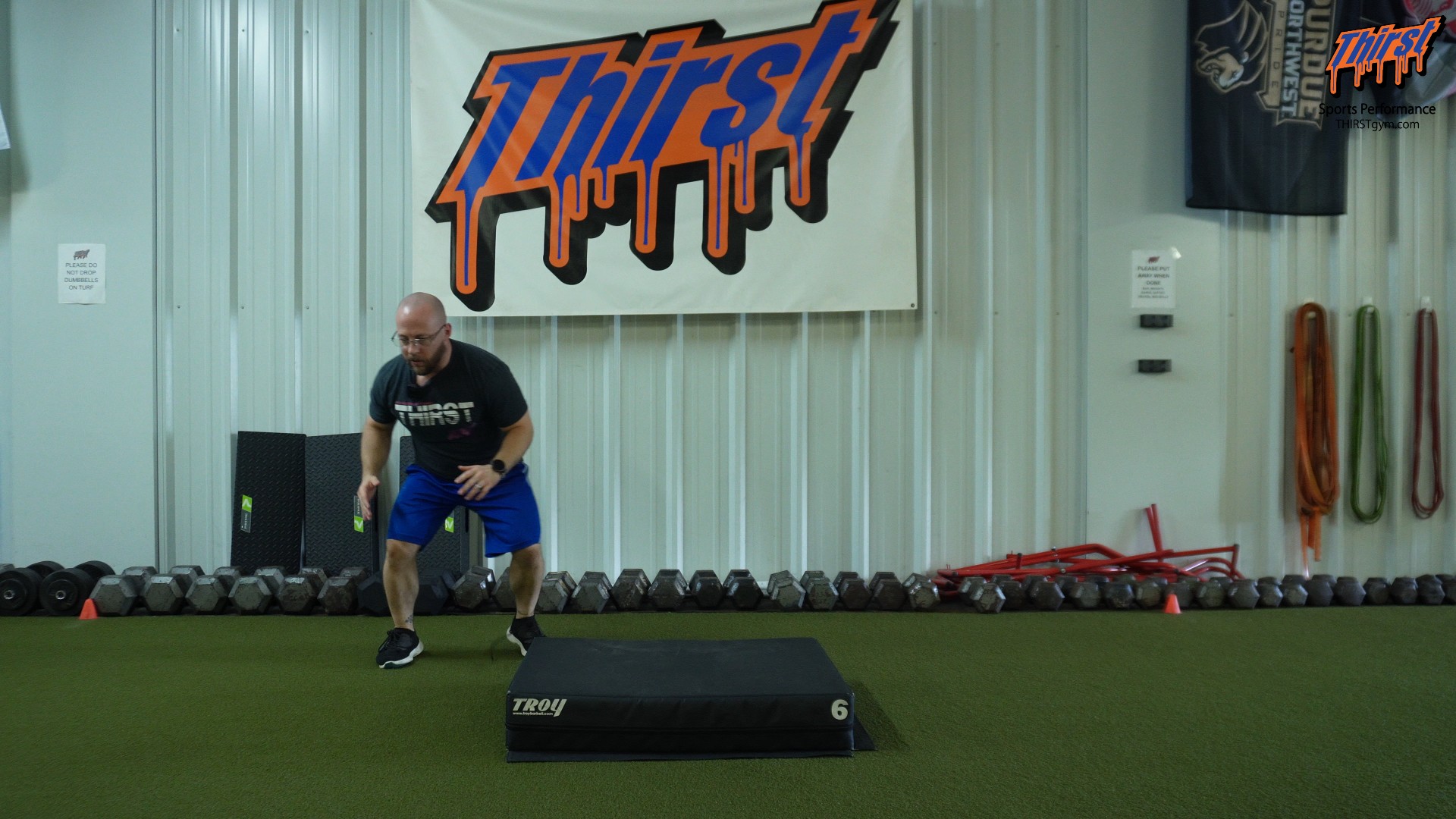Low Box Hop to Lateral Pushout: Master the Art of Rapid Direction Changes
If you’re looking to develop explosive lateral movement and lightning-quick direction changes, the low box hop to lateral pushout might be exactly what your training program needs. This dynamic drill combines the reactive power of plyometric training with the precision footwork demanded in competitive athletics, creating a movement pattern that translates directly to performance on the court, field, or pitch.
Watch the video below on how to maximize this exercise.
What Makes This Drill Different from Standard Box Jumps
Unlike traditional box jumps where height and power are the primary focus, the low box hop to lateral pushout emphasizes speed, control, and directional change. The intentionally low box height between six and twelve inches serves a specific purpose in the movement mechanics. By keeping the vertical component minimal, you’re able to maintain quick ground contact times while directing your energy laterally rather than vertically. This distinction matters tremendously for athletes who need to change directions rapidly during competition, whether you’re defending an opponent in basketball, cutting on the soccer field, or reacting to a tennis serve.
The lateral pushout component introduces an element that standard plyometric box work simply cannot replicate. After landing from the box, you’re immediately challenged to redirect your momentum sideways while maintaining single leg stability and an athletic stance. This mirrors the exact movement pattern you’d use when planting and cutting during actual gameplay, making it one of the most functionally specific agility drills available.
Setting Up for Success
The beauty of this exercise lies in its accessibility. You’ll need a low plyometric box, a stack of weight plates, or even a sturdy stair that sits in that ideal six to twelve inch range. The surface should be stable and non-slip, as you’ll be generating force both vertically and laterally throughout the movement. Your training area needs enough horizontal space to accommodate the lateral pushout, typically about six to eight feet of clear space on either side of your box.
Position yourself facing the box at a comfortable starting distance, roughly one to two feet away. Your stance should be athletic and ready, with your weight balanced on the balls of your feet. This starting position primes your body for the explosive yet controlled movement about to follow.
Breaking Down the Movement Pattern
The execution of the low box hop to lateral pushout requires coordination between multiple movement phases. Begin by performing a light hop onto the box, emphasizing quickness over height. This isn’t about demonstrating maximal vertical jump ability. Instead, think of it as a rapid, efficient movement that gets you onto the elevated surface with minimal ground contact time and controlled force. Your landing on the box should be quiet and balanced, not heavy or jarring.
The critical phase begins as you step or hop off the box. As you descend, prepare to land on a single leg rather than both feet. This single leg landing position immediately engages your stabilizing muscles and prepares your body for the directional change. The moment your foot contacts the ground, execute a powerful lateral push, driving yourself sideways away from the box. This isn’t a lateral bound where you’re trying to cover maximum distance. Instead, focus on the quality of the push and your ability to maintain an athletic stance throughout the lateral movement.
The landing position after your lateral push deserves careful attention. You should finish in a wide, stable base with your hips loaded and your center of gravity controlled. This ready position allows you to immediately repeat the movement or react to the next athletic demand. The entire sequence from box to ground to lateral push should flow smoothly, with each phase transitioning seamlessly into the next.
The Athletic Benefits You’re Training
This drill specifically targets the redirection step that strength and conditioning expert Lee Taft has popularized in athletic development circles. When you watch elite athletes change direction during competition, they don’t simply stop and restart. They utilize efficient redirection mechanics that allow them to maintain momentum while altering their path. The low box hop to lateral pushout trains exactly this skill pattern.
Beyond the technical footwork benefits, you’re simultaneously developing single leg stability, lateral power production, and the neuromuscular coordination required for rapid direction changes. These qualities transfer directly to defensive movements in basketball, cutting patterns in soccer and football, and court coverage in racquet sports. Even if you’re not a competitive athlete, training these movement patterns enhances your overall movement quality and reduces injury risk during recreational activities.
Programming Recommendations for Your Training
The relatively low intensity of the box hop component allows for slightly higher training volumes compared to traditional high-effort plyometrics. Consider implementing three to five sets of three to six repetitions per side within your training session. Because the primary training stress comes from the lateral pushout rather than the vertical box hop, your nervous system can handle more total reps without excessive fatigue accumulation.
Place this exercise early in your training session when you’re fresh and your nervous system is primed for power development. The coordination and precision required make this a poor choice for metabolic conditioning work or high-fatigue scenarios. Instead, treat it as a technical skill drill that happens to build impressive athletic qualities.
Whether you’re working to beat defenders off the dribble, improve your tennis court coverage, or simply move more athletically in everyday life, the low box hop to lateral pushout delivers functional results that show up when it matters most.








